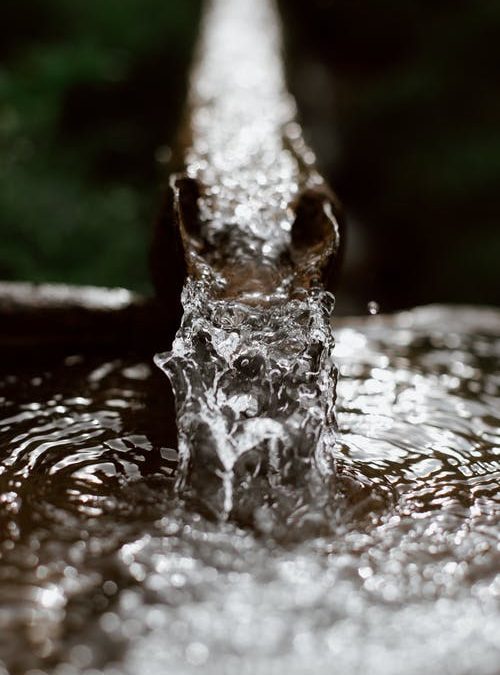Image via Pexels
Well water is drawn directly from the ground, so it is never going to be 100% pure. There will always be some mineral content the water has acquired from the surrounding soil and other materials under the earth. However, while this in itself is nothing to worry about, you do need to be aware of the different levels of minerals in your water – including those of iron.
Iron occurs naturally in well water and is nothing to be alarmed about. In most cases, the amount of iron content within the water remains within safe levels and causes no harm. But what exactly are these levels, and why is iron content something we need to keep track of?
Safe Levels of Iron Within Well Water
Acceptable levels of iron within well water are monitored by governments at a state level. Each state offers its own guidelines regarding what it considers a safe and acceptable level of the mineral within water samples. These guidelines are generally based upon findings from the Environmental Protection Agency (EPA), though, so they tend to be similar in nature.
For example, in the States of Minnesota and Illinois, guidelines suggest that an iron level of above 0.3 milligrams per liter (mg/l), or 0.3 parts per million, could be problematic.
It may be worth contacting your own state health department to learn more about the recommendations in your area.
It is also worth noting that having an iron level of above 0.3 mg/l in your well water does not necessarily constitute a serious health risk. Iron is a natural compound, and our bodies need a good supply of the mineral if we are to stay healthy and fully functioning. Toxic doses of iron begin at around 20 mg/kg, equal to 20 mg/l of iron in well water.
As levels of iron in well water across the US are not likely to exceed 1 mg/l, it is unlikely that anyone on your site is going to be put at risk of iron poisoning due to accidental ingestion. In this sense, iron contamination becomes less serious than something like chlorine exposure, which can be dangerous at higher levels of exposure. So, with this in mind, what are the dangers of well water iron levels that exceed 0.3 mg/l?
The Risks of Excessive Iron in Well Water
A high concentration of iron in your well water can cause a wide variety of risks to health and your business. We’ve compiled some of the most common risks below.
- Harm caused to hair and skin
Excessive levels of iron can cause damage to the hair and skin, even if it is not ingested. The mineral works to dry out the surfaces of the hair and skin, making them lose their natural suppleness and other properties.
If exposure is prolonged, or if water comes into contact with sensitive skin or skin that is already suffering from damage or an ailment, the harm caused can become worse. If anyone experiences discomfort or pain as a result of exposure to well water, they should seek medical attention.
- Staining and contamination
We’ve all seen what happens when iron oxidizes. It forms the familiar flaky texture and orange coloring of rust. This is exactly what can happen to surfaces or garments when the iron content of well water becomes too high.
Watch out for orange streaks forming in areas that have been exposed to the well water. Also, watch out for slime and other residue that may form following exposure. This could be a sign that the iron content is too high.
- Bad taste and odor
When iron levels get too high, it can quickly become noticeable in different ways. If you use the well water to prepare food, you could find that the food has an unpleasant taste even though the water has been boiled.
You may also notice that the water begins to give off an unpleasant odor. While this is not a huge risk for your business or your facility, it does serve as an indicator of the presence of excessive iron, which could expose you to the other dangers on this list.
- Damage to pipes and water systems
Iron residue can begin to form in your pipes and within your water system, causing the metal to rust and corrode. This can result in severe damage to your pipes.
It can also increase the levels of contamination as the iron residue leaches into water that has been sourced from other places and is subsequently spread through your system.
- Damage to appliances
Of course, it’s not just pipes and water systems that can see iron residue buildup. It can also build up within appliances and crucial pieces of equipment, which can then begin to cause severe damage over time.
You don’t want to have to replace expensive pieces of kit as a result of excessive iron levels. This is why it is so important to take testing seriously and to stay on top of the iron content of your well water.
Testing for Excess Iron Levels
To test your well water, you first need to get a sample. You may decide to take a number of different samples from different locations to get a clear picture of what is going on.
You can then choose to test your well water yourself using a testing kit. These testing kits will come with small vials or ampules that you can use to collect your water samples. Alternatively, you can contact your local public health authority who will carry out the test for you if you prefer.
Test results can give you valuable insight into how much iron is in your well water, and they will let you know whether you need to take any steps to treat your water and make your site safe for use.
